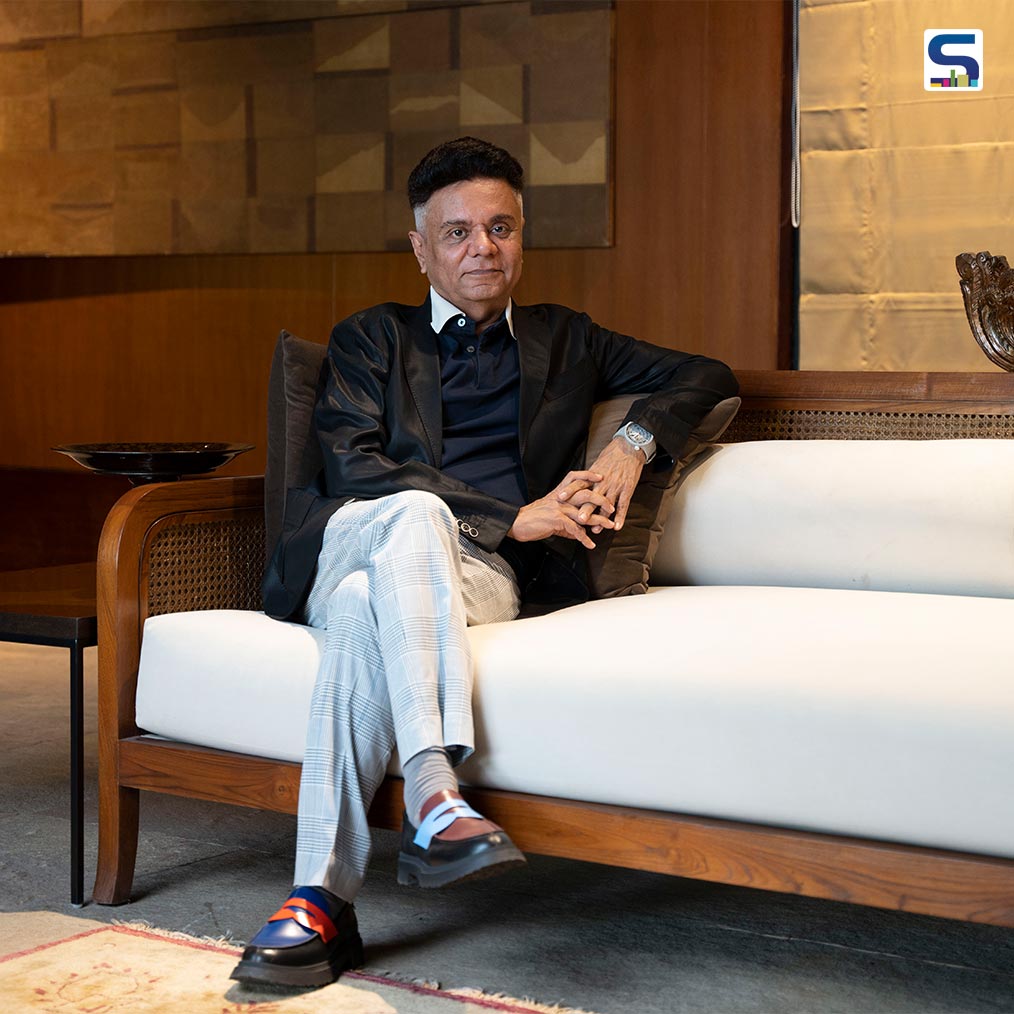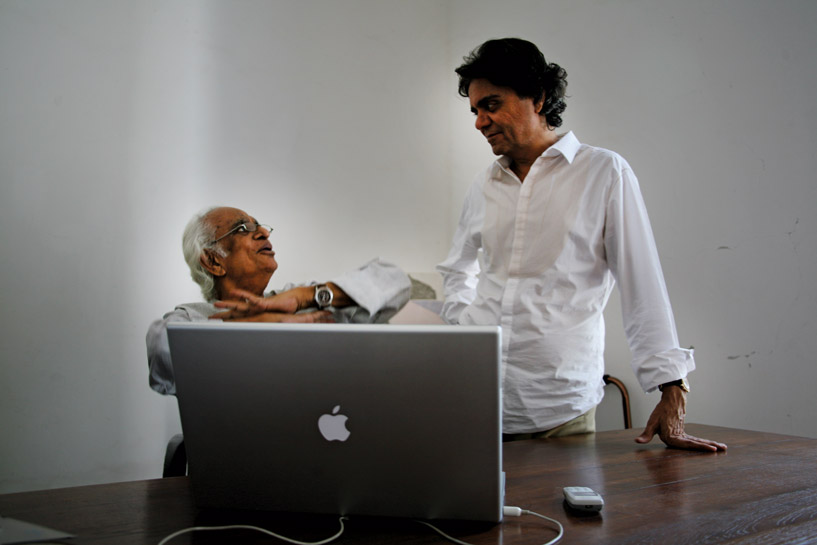
Pinakin Patel needs no introduction. Self-taught in various design fields, he has left an indelible mark on the Indian design scene for 45 + years. Despite graduating with a degree in Chemistry, his passion led him to excel in architecture, interior design, furniture design, and fashion. His life epitomizes an unwavering commitment to creativity and a knack for transcending disciplinary confines. SURFACES REPORTER® (SR) catches up with the designer for an impromptu chat.
How do you stay relevant in design at 70?
Design assignments allowed me to straddle different cycle of designs right from art deco to minimalism. Even today depending on the engagement the assignment offers, I do a thorough research to arrive at the desired results. Once the job is done and I have internalized the process myself, it stays on as a distinct memory to be retrieved anytime in life. In the present, as a designer, I have moved on to other spaces where my talent and skill sets can create some magic. Strange as it may sound, even at 70 this thought process has kept me relevant to the times.
Having said that every object has a story to tell, and stories have a timeline overlap. So what is your take on this?
Every object does have a story to tell, it all about how much importance you attach to the story and remain attached to it. In design a functional need is primal; it is driven by a thought process and logic. So that itself is a part of the story. In my work these are important elements as they shape the final expression of the form. I must add that these elements are a complex result of different factors, so the story is not that simple. Having said that, the beauty of this process is each form of expression attracts its own audience. As a result, overtime, people become connected to you through your unique expression and the way you articulate your work.


Being a self taught designer yourself what advice do you have for individuals who wish to follow that path?
Well, I think self-learning is going to remain more of a personal quest, a search for growth at the back of your mind, rather than a physical need. Now there are enough universities, both national and international, along with online courses and skill development classes. There is so much now being offered that one will not have to garner knowledge in isolation. Having said that, self-teaching or self-awareness is very important for a creative person, only when that person is aware of how much he knows and what else he wants to know, can he figure out how and where to learn it. So, that self-search has to continue to grow; it can’t stop.
How does this self awareness also impact the other faculties of one’s life?
You know, the only thing that differentiates us from other species on this planet is the subtle intellect that we have, which manifests itself as awareness, but it’s actually the ability to make finer judgments than mere existence. So, up to the mineral, plant, and animal kingdom, it’s not that there is no intelligence in those species. Animals and birds are sometimes found to be more intelligent than human beings; they can fly across from Siberia to India without a GPS.
If we realize our potential as human beings and acknowledge that we are blessed with the ability to evolve into something totally different. A lion’s cub, once it’s born, has no other choice but to grow up to be a lion, whereas I could start off in chemistry and venture into architecture, design, philosophy, music, and so many other hobbies. As long as a person remains aware of that potential and sees it as a privilege to be born as a human being; I think that awareness will play an important role for him. It will keep offering him opportunities at a very basic level to remain relevant and at an evolved level to climb up the evolutionary ladder.


" In design a functional need is primal; it is driven by a thought process and logic. So that itself is a part of the story. In my work these are important elements as they shape the final expression of the form"


As Indian design trends globalize, how do you merge traditional and contemporary elements as a designer?
At the surface, the terms traditional and contemporary seem to be contrasting words, but they are sort of dependent, even though linguistically they are antonyms you can’t have one without the other. if we take a good look at our past, like a traditional painting of a god was very descriptive. Likewise, Indian culture also made way for yantras or tantric art, where everything was also expressed through subtle symbolism. So it’s not like abstraction or contemporary forms did not exist in India; they always existed. It’s just that we kind of prefer to associate with a particular genre. So, if one is rich in one’s exposure to one’s own culture, then I don’t find that such a big contradiction.

You had Mr. Dashrath Patel as a mentor in your design journey, how important is it for young designers to find a mentor?
It’s crucial and only the fortunate ones find mentors. For young people, I would advise that during your formative years, keep your options wide open. Don’t rush to establish your career, individuality, or self-expression. Instead, keep an open mind and leave room for growth. When entering a new market, identify the people you admire or want to follow. Don’t solely rely on Instagram for daily inspiration from their feed because even magazines can provide trends. Instead, delve deeper into the people who inspire you and your work. Read more about them, learn about their background, and if possible, seek a short-term internship or job with them before striking out on your own. A good mentor can serve as the perfect bridge between education and real-world experience.